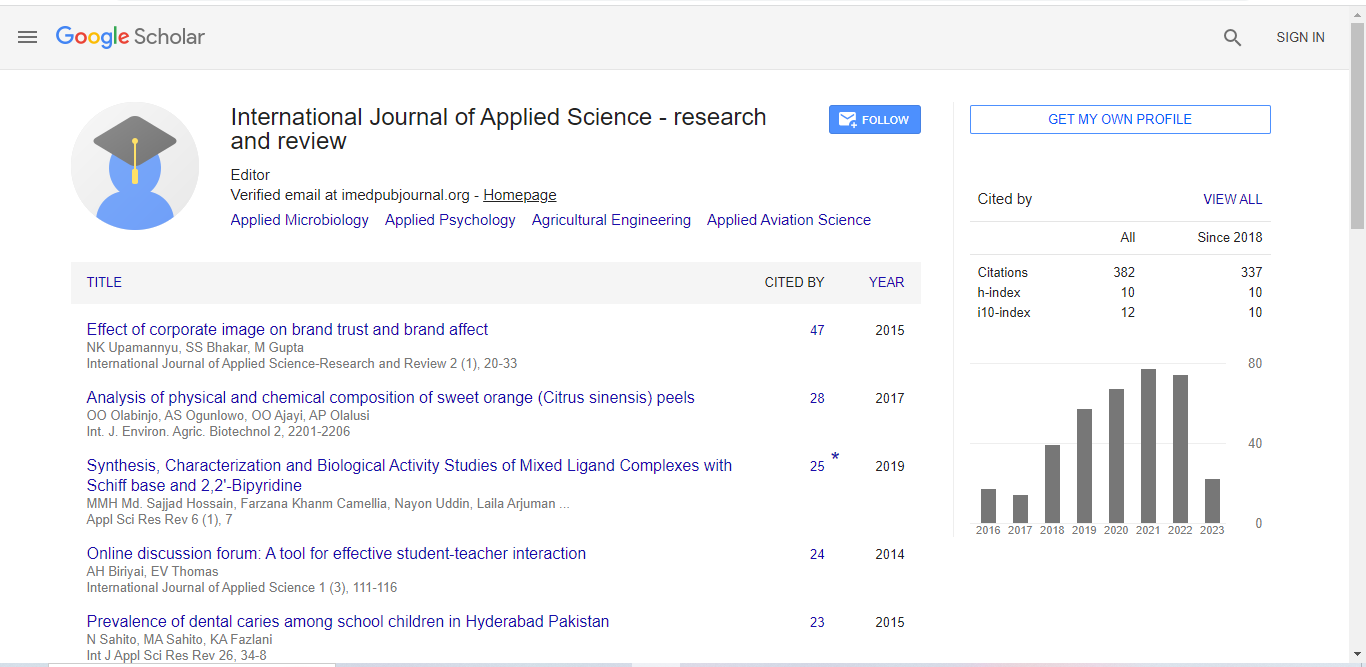Short Communication - (2024) Volume 11, Issue 6
Advancements in Light-Driven Lattice Soft Microrobots with Multimodal Locomotion
Vaelen Drayke*
Department of Applied Science, University of Debrecen, Hungary
*Correspondence:
Vaelen Drayke,
Department of Applied Science, University of Debrecen,
Hungary,
Email:
Received: 02-Dec-2024, Manuscript No. IPIAS-24-22334;
Editor assigned: 04-Dec-2024, Pre QC No. IPIAS-24-22334 (PQ);
Reviewed: 18-Dec-2024, QC No. IPIAS-24-22334;
Revised: 23-Dec-2024, Manuscript No. IPIAS-24-22334 (R);
Published:
30-Dec-2024, DOI: 10.36648/2494-9988-11.6.55
Introduction
Light-driven lattice soft microrobots with multimodal locomotion
represent a significant advancement in the field of soft robotics,
enabling the creation of small-scale robots that can move and
perform tasks in response to light stimuli. These robots, typically
made from soft, flexible materials like hydrogels or elastomers, are
designed to harness the power of light to induce movement. Unlike
traditional rigid robots, soft microrobots can deform and adapt
their shape in response to external forces, making them ideal for
applications in confined or delicate environments, such as inside
the human body or in microscale manufacturing processes. One of
the most remarkable features of these microrobots is their ability
to exhibit multimodal locomotion. Traditional robots, whether
soft or rigid, often rely on a single mode of movement, such as
crawling, walking, or swimming. However, light-driven lattice soft
microrobots are designed to switch between different locomotion
modes depending on the applied light pattern, intensity, or
wavelength. This multimodal ability is achieved through the careful
design of the robot’s lattice structure, which can be programmed
to respond to light in multiple ways, enabling it to move in diverse
directions or even change its movement pattern to suit specific
tasks.
Description
The mechanism behind this multimodal locomotion involves the
material properties and the geometry of the microrobot. Light is
typically used to trigger photothermal or photochemical reactions
in the materials, leading to localized heating or chemical changes.
These reactions cause parts of the soft robot to expand or contract,
creating movement. The lattice structure of the robot plays a
crucial role in controlling the movement, as it allows the robot
to deform in a controlled and predictable manner. By modulating
the intensity or direction of the light, the lattice microrobot can
switch between different movement modes, such as walking,
rolling, or even swimming through a liquid medium. One example
of how light-driven lattice soft microrobots operate is by using
photothermal materials, which absorb light and convert it into
heat. This localized heating induces thermal expansion in specific
regions of the robot, causing it to bend or twist. The lattice structure,
which may consist of interconnected soft materials, allows for
precise control over how the robot bends, enabling different
types of motion. In some designs, multiple light sources or varying
wavelengths are used to create complex patterns of heating,
leading to sophisticated movement behaviors. For instance, by
shining light from different directions or using alternating light
pulses, the robot can perform a coordinated motion sequence
or shift between different locomotion modes. The advantages of
light-driven lattice soft microrobots with multimodal locomotion
extend beyond their versatility in movement. Their small size and
soft materials make them well-suited for applications that require
delicate handling, such as medical procedures, environmental
monitoring, or microscale assembly tasks. In medical applications,
these robots could be used for targeted drug delivery, minimally
invasive surgeries, or diagnostics, where their ability to navigate
through small and complex environments, such as blood vessels or
tissues, would be invaluable. In such applications, the robots could
be designed to respond to specific wavelengths of light, allowing
for precise control over their movement and operation [1-4].
Conclusion
In conclusion, light-driven lattice soft microrobots with multimodal
locomotion are at the forefront of soft robotics, offering new
possibilities for precise, adaptable, and efficient movement in a
variety of applications. Their ability to switch between different
modes of locomotion in response to light stimuli makes them highly versatile, while their small size and soft materials enable
them to navigate delicate and confined spaces. With continued
research and development, these robots hold great promise for
advancing fields such as medicine, environmental monitoring, and
microscale manufacturing, pushing the boundaries of what soft
robotics can achieve.
Acknowledgement
None.
Conflict Of Interest
The author declares there is no conflict of interest in publishing
this article.
References
- McCracken JM, Donovan BR, White TJ (2020) Materials as machines. Adv Mater 32:1906564.
[Crossref] [Google Scholar]
- Yang ZH, Wang QH, Wang TM (2016) Dual-triggered and thermally reconfigurable shape memory graphene-vitrimer composites. Acs Appl Mater Inter 8: 21691-21699.
[Crossref] [Google Scholar]
- Ahn C, Li K, Cai S (2018) Light or thermally powered autonomous rolling of an elastomer rod. ACS Appl Mater Inter 10: 25689-25696.
[Crossref] [Google Scholar]
- Van Oosten CL, Bastiaansen CW, Broer DJ (2009) Printed artificial cilia from liquid-crystal network actuators modularly driven by light. Nat Mater 8: 677-682.
[Crossref] [Google Scholar]
Citation: Drayke V (2024) Advancements in Light-driven Lattice Soft Microrobots with Multimodal Locomotion. Int J Appl Sci Res Rev. 11:55.
Copyright: © 2024 Drayke V. This is an open-access article distributed under the terms of the Creative Commons Attribution License, which permits unrestricted use, distribution, and reproduction in any medium, provided the original author and source are credited.

